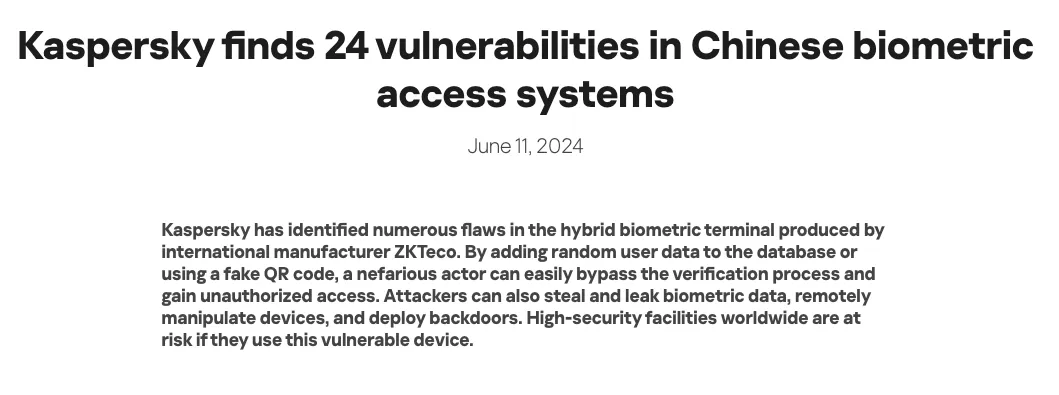Assessing the Risk: Sub-Domain Takeover via EC2 IP Takeover
Learn how EC2 IP takeover can lead to subdomain takeover vulnerabilities, and whether this emerging technique poses a real threat to your cloud infrastructure.
Biometric authentication (fingerprint, face or iris recognition, voice, behavioral traits, and others) is becoming a common feature in SaaS applications. Companies use it for user logins, KYC verification, privileged operations, and device access. The push toward passwordless authentication and multi-factor security makes biometrics attractive: they combine user convenience with stronger assurance.
The challenge is not the idea of biometrics, but the implementation. Poor storage, weak spoofing protection, and insecure fallback systems can make biometrics no safer than passwords. Below we explore recent vulnerabilities, the risks they highlight, and the top practices for reducing exposure.
1. Windows Hello for Business Bypass
In 2025, researchers showed that with local administrator access, attackers could tamper with biometric templates stored on a device so the system would accept their fingerprint or face. Microsoft’s Enhanced Sign-In Security (ESS) mitigates the flaw, but only on newer hardware.

2. ZKTeco Biometric Terminals (2024)
Kaspersky uncovered dozens of bugs in biometric terminals, including SQL injection, command execution, and path traversal. These terminals, used for physical access, often tie into enterprise networks and SaaS systems.

3. Suprema Biostar 2 Breach (2019)
A centralized database holding millions of fingerprint and face templates was leaked. Unlike passwords, biometrics cannot be reset, making this type of breach permanently damaging.

4. Fingerprint Driver and Wallet Flaws
Researchers found issues in Synaptics drivers and SGX wallets that exposed biometric templates and allowed attackers to exfiltrate sensitive data, including cryptocurrency wallet details.
5. Dark Web Exposure and Privacy Risks
Biometric data has surfaced on underground markets. Many systems store templates unencrypted or with weak controls, exposing users to long-term identity risks.
6. Template Poisoning Attacks
Academic research shows that attackers can gradually “drift” biometric templates by exploiting update mechanisms, ultimately getting their own features accepted as valid.
At Software Secured, we specialize in finding and fixing these risks before attackers exploit them.
If you’re adding biometrics to your SaaS application, or want to validate that your current implementation is safe, our team can help. Secure and user-friendly biometrics are possible, but only with disciplined testing and strong code practices.
.webp)
Sherif Koussa is a cybersecurity expert and entrepreneur with a rich software building and breaking background. In 2006, he founded the OWASP Ottawa Chapter, contributed to WebGoat and OWASP Cheat Sheets, and helped launch SANS/GIAC exams. Today, as CEO of Software Secured, he helps hundreds of SaaS companies continuously ship secure code.
Security
Can be easily manipulated without detection if not properly secured.
Digitally signed and can be validated on the server. Manipulation can be detected.
Size
Limited to 4KB.
Can contain much more data, up to 8KB.
Dependency
Often used for session data on the server-side. The server needs to store the session map.
Contains all the necessary information in the token. Doesn’t need to store data on the server.
Storage Location
Browser cookie jar.
Local storage or client-side cookie.
Compare OpenID Connect, SAML v2.0, and OAuth 2.0. Understand key differences, roles, and security risks in modern federated identity systems.


Providing the quality of the biggest names in security without the price tag and complications.
Manual penetration testing
Full time Canadian hackers
Remediation support
